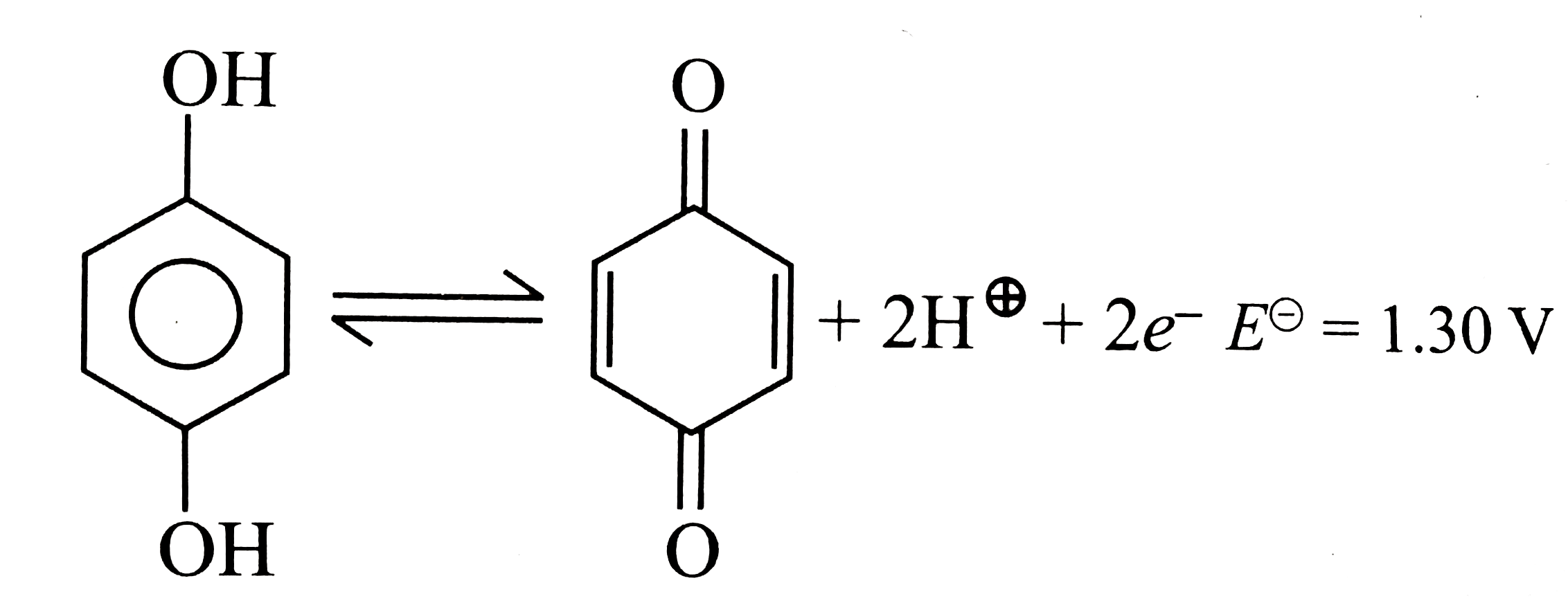Properties|Formation of Intersitial Compounds|Trends In M2+/ Stndard Electrode Potentials|Summary
Step by step video solution for Properties|Formation of Intersitial Compounds|Trends In M2+/ Stndard Electrode Potentials|Summary by Chemistry experts to help you in doubts & scoring excellent marks in Class 12 exams.
Updated on:21/07/2023Similar Questions
Properties OF Transition Element|| Melting Point and Boiling Point||Oxidation||Electrode Potential||Magnetic Behaviour|| Formation OF Interstitial Compounds|| Catalytic Properties|| Formation OF Non Stoichiometric Compounds||Complex & Alloy Formation
View SolutionChemical Properties|Reactions With Organic Compounds|Hydrides|Summary
View Solution
Knowledge Check
Among the transition metals of 3d series, that one that has the highest negative M2+/M standard electrode potential is
ATiBCuCMnDNiFor the half cell

At pH=2, the electrode potential isA1.36VB1.30VC1.42VD1.20VThe potential associated with each electrode is known as electrode potential. If the concentration of each species taking part in the electrode reaction is unity (if any appears in the electrode reaction, it is confined to 1 atmospheric pressure) and further the reaction is carried out at 298 K, then the potential of each electrode is said to the standard electrode potential. By convention, the standard electrode potential of hydrogen electrode is 0.0 volt. The electrode potential value for each electrode process is a measure of relative tendency of the active species in the process to remain in the oxidised/reduced form. A negative E∘ means that the redox couple is a stronger reducing agent than the H+/H2 couple. A positive E∘ means that the redox couple is a weaker reducing agent than the H+/H2 couple. The metal with greater positive value of standard reduction potential forms the oxide of greater thermal stability.
Which of the following oxides will be thermally most stable ?AZnOBMgOCCu2ODAg2O
"Catalytic Properties,Trends in Electrode Potential Values , Alloy Formation,Interstitial Compound,Preparation and Properties OF K2Cr2O7 "
View SolutionElectrode Potential|Electrochemical Series|OMR|Summary
View SolutionCalculate the electrode potential at a copper electrode dipped in a 0.1 M solution of copper sulphate at 25∘C. The standard electrode potential of Cu2+/Cu system is 0.34 volt at 298 K.
View SolutionThe potential associated with each electrode is known as electrode potential. If the concentration of each species taking part in the electrode reaction is unity (if any appears in the electrode reaction, it is confined to 1 atmospheric pressure) and further the reaction is carried out at 298 K, then the potential of each electrode is said to the standard electrode potential. By convention, the standard electrode potential of hydrogen electrode is 0.0 volt. The electrode potential value for each electrode process is a measure of relative tendency of the active species in the process to remain in the oxidised/reduced form. A negative E∘ means that the redox couple is a stronger reducing agent than the H+/H2 couple. A positive E∘ means that the redox couple is a weaker reducing agent than the H+/H2 couple. The metal with greater positive value of standard reduction potential forms the oxide of greater thermal stability.
Which of the following reactions is not correct ?
View SolutionThe potential associated with each electrode is known as electrode potential. If the concentration of each species taking part in the electrode reaction is unity (if any appears in the electrode reaction, it is confined to 1 atmospheric pressure) and further the reaction is carried out at 298 K, then the potential of each electrode is said to the standard electrode potential. By convention, the standard electrode potential of hydrogen electrode is 0.0 volt. The electrode potential value for each electrode process is a measure of relative tendency of the active species in the process to remain in the oxidised/reduced form. A negative E∘ means that the redox couple is a stronger reducing agent than the H+/H2 couple. A positive E∘ means that the redox couple is a weaker reducing agent than the H+/H2 couple. The metal with greater positive value of standard reduction potential forms the oxide of greater thermal stability.
Which of the following couples will have highest value of emf ?
View Solution
